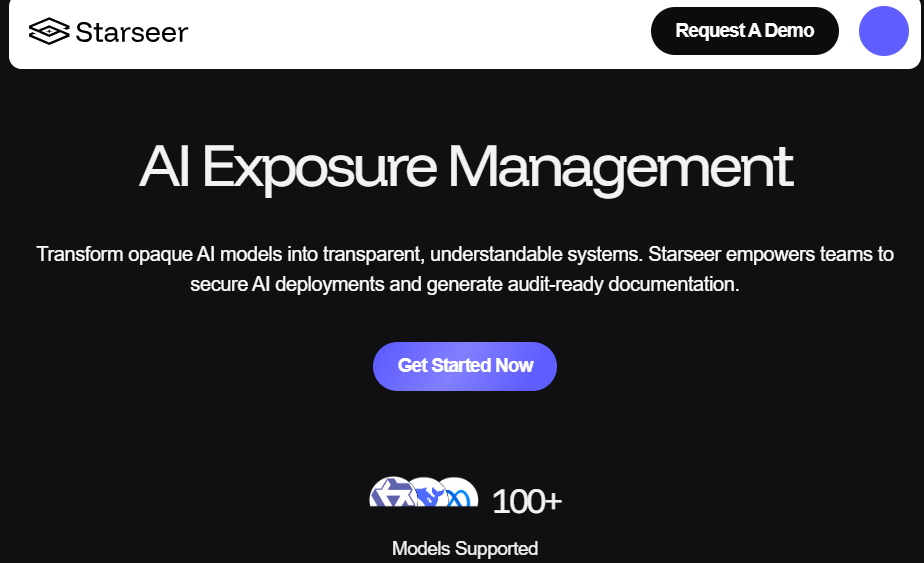Starseer Raises $2M in Seed Funding to Build the Future of Predictive Cyber Defense
July 30, 2025
byFenoms Startup Research

Starseer, a cybersecurity startup pioneering predictive threat detection using machine learning and behavioral modeling, has raised $2 million in Seed funding. The round was led by Gula Tech Adventures, a prominent cybersecurity-focused VC firm, underscoring growing investor interest in proactive, AI-driven defense strategies.
Founded by Tim Schulz, Starseer is on a mission to shift cybersecurity from reactive incident response to proactive threat anticipation - helping organizations detect emerging threats before they escalate.
What Starseer Is Building
Starseer is developing a predictive threat intelligence platform that analyzes network behavior, user anomalies, and external intelligence signals to forecast likely attack paths and prioritize preventive action. Unlike traditional SIEM and XDR tools that surface alerts after anomalies occur, Starseer’s engine predicts where adversaries will strike next.
Key components include:
- AI-Based Behavioral Analysis Models
- Dynamic Attack Path Mapping and Forecasting
- Threat Simulation and Scenario Modeling
- Real-Time Risk Scoring and SOC Workflow Integration
The platform is built to reduce alert fatigue, automate early detection, and give Security Operations Centers (SOCs) a roadmap of where to focus before the breach happens.
Why It Matters Now
Cyberattacks are becoming more frequent, more complex, and more automated. According to IBM’s 2024 Threat Intelligence Index, the average cost of a data breach has climbed to $4.45 million, and 83% of organizations have experienced more than one breach.
Yet most cybersecurity tools still operate in reactive mode - they detect threats after malicious activity is underway. Starseer flips that paradigm by using real-time data to model adversarial behavior and predict the future, not just report the past.
And here’s where their edge sharpens: Starseer doesn’t just look for known malware signatures or static threat indicators - it learns patterns of pre-attack behaviors unique to each network, letting teams detect compromise before any payload drops.
This isn’t just incremental improvement - it’s a foundational shift in how cyber defense can be done.
The Founder Blueprint for New Security Infrastructure
This is where Starseer offers a key lesson for founders: in cybersecurity, the biggest leverage isn’t in detection - it’s in anticipation. Most startups compete by trying to detect faster or respond better. Starseer’s insight is different: what if you could predict the breach path before it starts?
That’s the value of building infrastructure that thinks in probabilities, not patterns.
Here’s the insight:
When you build tools that help teams act before the threat exists, you move from defense to dominance. Starseer isn’t just reducing risk - it’s building foresight. In a world of ransomware, LLM-aided phishing, and multi-vector attacks, that foresight becomes operational gold.
For founders in SaaS, AI, or cyber: build for decisions, not dashboards. Starseer’s real product isn’t just analytics - it’s guidance. That’s how you become indispensable in workflows. That’s how you move from vendor to platform.
Meet the Founder
Tim Schulz, CEO and founder of Starseer, is a seasoned cybersecurity architect with a background in threat intelligence, data science, and military cyber operations. His career spans roles in both public and private sectors, including time spent designing adversary emulation frameworks for critical infrastructure providers.
Schulz started Starseer after watching SOC teams overwhelmed with alerts, lacking context, and constantly reacting. His vision: give defenders the same forecasting capabilities adversaries use to plan their attacks.
How Starseer Stands Out
In a market full of security vendors, Starseer breaks through in three strategic ways:
- Prediction, Not Just Detection: While most solutions surface events already in progress, Starseer forecasts pre-exploit behaviors - turning prevention into precision.
- Contextual Attack Graphing: It visualizes how adversaries might move through a specific network, highlighting probable paths of least resistance.
- SOC-First UX: The interface is designed to reduce cognitive load - offering prioritized, explainable alerts that integrate directly into tools like Splunk, Sentinel, and ServiceNow.
Market Outlook: A Security Stack Ready for Rebuild
The global cybersecurity market is projected to grow from $182.3 billion in 2024 to over $298 billion by 2028, according to Gartner. Within that, predictive analytics and threat intelligence are two of the fastest-growing segments.
A 2023 report by Forrester noted that 65% of SOC leaders are actively investing in predictive threat intelligence, and that organizations using behavior-based forecasting tools reduced average dwell time by 42%.
Simultaneously, the rise of generative AI is accelerating attack sophistication - forcing defenders to adapt faster than ever. Tools like Starseer, which combine data science with operational intelligence, are quickly becoming critical layers in modern defense architectures.
What’s Next for Starseer
Following its $2 million seed round, Starseer will focus on:
- Scaling its engineering team for real-time modeling and ML optimization
- Expanding integrations across enterprise SIEM and SOAR platforms
- Launching closed pilots with financial services and critical infrastructure clients
- Securing additional data partnerships to enhance threat signal diversity
- Building out explainability layers for compliance-driven environments
As the cybersecurity landscape continues to shift from alert response to intelligent anticipation, Starseer is poised to become a category-defining platform.









